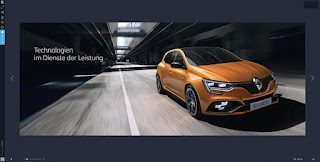The landscape of content marketing automotive industry has witnessed significant transformations over the years. In this journey back to 2013, we should look back the strategies and trends that defined content marketing during that pivotal year. From social media to blogging, the industry was gearing up for a digital shift, setting the stage for the innovative approaches we see today.
I. The Digital Acceleration:
In 2013, the automotive industry was navigating the digital terrain, realizing the potential of online platforms to connect with consumers. The term content marketing automotive industry gaining traction as brands sought to move beyond traditional advertising methods. As the shift towards digital communication gained momentum, automotive companies began to recognize the importance of creating compelling and shareable content.
II. Blogging Drives Engagement:
One of the notable trends was the increased emphasis on blogging. Brands recognized the power of maintaining a consistent online presence through blogs, providing valuable information to their audience. Manufacturers and industry experts began sharing insights, news, and behind-the-scenes content, establishing a direct line of communication with consumers.
III. Social Media Shifts Gears:
2013 marked a turning point for social media in the automotive industry. Brands started embracing platforms like Facebook, Twitter, and YouTube to engage with their audience. From sharing captivating visuals to creating interactive campaigns, automotive companies were beginning to leverage social media as a means to build brand awareness and foster a sense of community among enthusiasts.
IV. Video Content Takes the Driver's Seat:
As internet speeds improved and video-sharing platforms gained popularity, content marketing automotive industry in 2013 saw a surge in video production. Brands started creating dynamic video content, ranging from virtual test drives to behind-the-scenes glimpses of manufacturing processes. The visual appeal of videos provided an immersive experience, allowing consumers to connect with the brand on a more personal level.
V. Mobile Optimization Emerges:
In 2013, the mobile revolution was well underway, and automotive content marketing was quick to adapt. Brands began optimizing their websites and content for mobile devices, recognizing the increasing prevalence of smartphones and tablets. This shift was essential for ensuring a seamless user experience, allowing consumers to engage with automotive content on the go.
Case Studies: Content Marketing Automotive Industry Success Stories in 2013:
1. Ford's "Go Further" Campaign:
Ford's "Go Further" campaign showcased the brand's commitment to innovation and sustainability. Through a combination of blog posts, social media updates, and engaging videos, Ford connected with consumers on a deeper level, emphasizing the brand's values and forward-thinking approach.
2. Chevrolet's "Under the Blue Arch" Web Series:
Chevrolet launched the "Under the Blue Arch" web series, providing a behind-the-scenes look at dealership life. This content marketing initiative aimed to humanize the brand, showcasing the people and stories behind Chevrolet dealerships, ultimately strengthening the connection between the brand and its customers.
The Road Ahead: Lessons Learned from 2013:
As we reflect on the content marketing automotive industry landscape in 2013, it's evident that the seeds of innovation planted during that time have blossomed into the diverse strategies we witness today. The emphasis on authentic storytelling, visual content, and digital engagement laid the groundwork for the industry's evolution.
The journey through 2013 serves as a reminder of the industry's resilience and adaptability. Brands that embraced the digital shift during this pivotal year set the stage for the dynamic and interactive landscape we now navigate. By understanding the strategies that shaped the past, automotive marketers can better navigate the road ahead, armed with the lessons learned from a transformative year in the industry's history.


